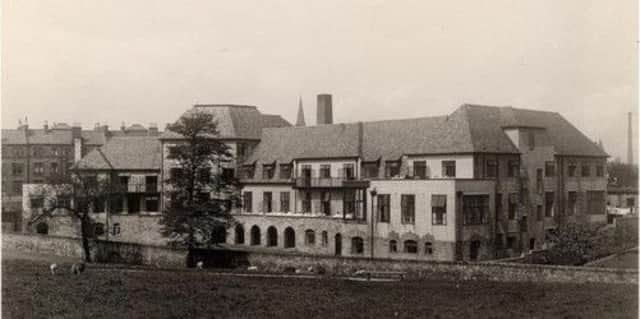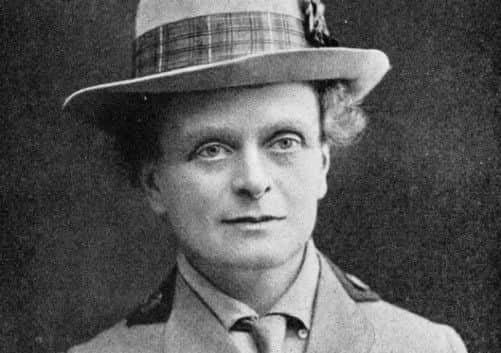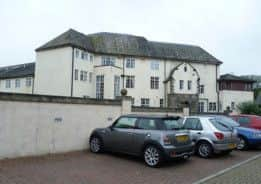Lost Edinburgh: Elsie Inglis Memorial Hospital
This article contains affiliate links. We may earn a small commission on items purchased through this article, but that does not affect our editorial judgement.


The Elsie Inglis Memorial Maternity Hospital (EIMHH) was founded in Abbeyhill, Edinburgh in 1925 to continue and build on the work of Doctor Elsie Inglis who had revolutionised the way in which expectant mothers were treated while in hospital.
Elsie Maud Inglis was born in the Indian hill station town of Naini Tal in 1864 to parents of Scottish descent. The family returned to Scotland in 1874 in an attempt to provide the young Elsie with a good standard of education. Elsie chose to study medicine in Edinburgh, Glasgow and Dublin in an era when it had only recently become acceptable for women to be involved in the field. Inglis left university in 1892 with the Victorian equivalent of a PhD in medicine.
Advertisement
Hide AdAdvertisement
Hide AdUpon obtaining her degree, Inglis soon moved to London where she was appalled by the horrific conditions and absence of specialised medical care for women. This experience provided all of the encouragement that Elsie required to set up a dedicated maternity hospital run only by women on Edinburgh’s High Street in 1904. Doctor Inglis’s general dissatisfaction with the way in which women were treated inspired her to join the National Union of Women’s Suffrage Societies (NUWSS), a group in ardent support of women’s rights, and become both a vocal and pivotal member of the suffragettes movement in Scotland. At the outbreak of the First World War, Doctor Inglis was heavily involved in the supply of humanitarian aid across Europe - despite initially being instructed to remain at home. Elsie Inglis and her medical team made a considerable impact across numerous locations on the Western Front, as well as several other countries further afield such as Romania, Russia, Malta and most notably Serbia where she became something of a saint figure. Elsie Inglis was forced to return to the United Kingdom after contracting cancer in 1916 - the disease cutting her remarkable life tragically short at the age of 53 only a year later. The right for women to vote in Britain was altered shortly before her death, though sadly Doctor Inglis did not live long enough to take part in an election. Her remains were interred within Edinburgh’s Dean Cemetery where her grave exists today.


In July 1925 the Elsie Inglis Memorial Maternity Hospital was opened to commemorate Doctor Inglis’s magnificent achievements and continue her legacy. The 82-bed hospital was one of the most modern facilities of its kind in the United Kingdom and became the birthplace of many an Edinburgh citizen for over 60 years. It was quite often preferred to the maternity ward at the original Edinburgh Royal Infirmary on Lauriston Place due to its intimate atmosphere and serene location close to St Margaret’s Loch and Holyrood Park. Despite its popularity, the hospital’s running costs were deemed as excessive for a facility so small and the decision was taken to close the EIMMH for good in 1988. The site later became a nursing home but has since been divided into apartments and care units. Part of the original structure still survives. Today the Simpson Centre at the Edinburgh Royal Infirmary acts as the city’s sole maternity ward, it is also Scotland’s largest.
Doctor Elsie Inglis’s hugely admirable efforts in advancing feminine medical care and her equally impressive humanitarian accomplishments during the war have cemented her status as one of the true medical greats of the early 20th century. Rather oddly, an official memorial in recognition of her considerable services to medicine and to her pioneering involvement in the women’s suffrage movement has been absent since the decision to axe the EIMHH in 1988. There has been talk in recent years of unveiling a statue to Elsie Inglis outside the famous medic’s former maternity hospital at 219 High Street, but plans appear to be on hold due to lack of funds. If commissioned, the statue would be only the third to depict a female figure in the entire city after the representation of Queen Victoria at the Foot of the Walk, unveiled in 1907, and the rather more generic African Woman and Child sculpture, erected in 1986, which adorns Festival Square. The appearance of Doctor Inglis on the front of Clydesdale Bank £50 notes and the odd plaque dotted around the city of Edinburgh don’t quite do justice to an esteemed philanthropist and suffragist whose work was once described by Winston Churchill as being destined to “shine in history”.
SEE ALSO:


ELSEWHERE:
• David McLean is the founder of Lost Edinburgh, a site dedicated to documenting the capital’s ever-changing landscape over the years.